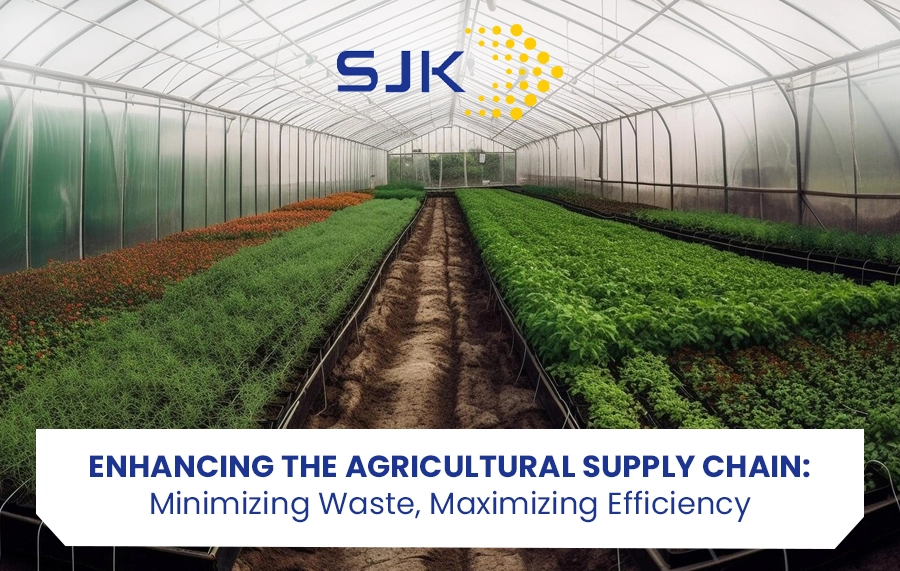Optimizing the Agricultural Supply Chain
A Collaborative Approach to Optimizing the Agricultural Supply Chain
The agricultural supply chain, from farm to table, plays a vital role in feeding the world's ever-growing population. However, this journey is fraught with challenges that lead to significant losses at various stages. It's estimated that globally, one-third of all food produced is lost or wasted. This translates to not just economic losses but also a strain on precious resources like water and land.
Understanding Post-Harvest Losses
Post-harvest losses refer to the quantity of food that gets spoiled, damaged, or discarded between the time of harvest and consumption. These losses can occur due to various factors, including:
> Improper handling and storage: Lack of proper infrastructure for post-harvest handling, such as inadequate storage facilities, can lead to spoilage and decay of perishable produce.
> Inefficient processing: Traditional processing methods can be time-consuming and lead to bruising or damage to fruits and vegetables.
> Transportation issues: Long transportation distances and improper temperature control during transportation can contribute to significant losses.
> Market fluctuations: Factors like unpredictable demand and fluctuating market prices can lead to produce being discarded.
The Impact of Post-Harvest Losses
The consequences of post-harvest losses create a ripple effect with widespread impact. Economically, farmers face financial strain as lost produce translates to reduced income. This can lead to a cycle of poverty and hinder investment in improved storage or processing techniques. Furthermore, these losses contribute to food insecurity, particularly in developing countries. With less food reaching consumers, access to nutritious and affordable food becomes a challenge. Finally, the environmental impact is significant. Food waste decomposes, releasing methane, a potent greenhouse gas. Additionally, the water resources used to grow the wasted food are essentially squandered. This creates a strain on already stressed water supplies, impacting entire ecosystems. In conclusion, minimizing post-harvest losses is not just about economic benefits for farmers, it's about ensuring food security, environmental sustainability, and the well-being of communities around the world.
Strategies for Minimizing Post-Harvest Losses
Fortunately, several strategies can be implemented to minimize these losses and optimize the agricultural supply chain:
> Improved Infrastructure: Investing in proper storage facilities with temperature control and ventilation systems can significantly extend the shelf life of produce.
> Advanced Processing Techniques: Adopting modern processing methods like gentle cleaning systems and efficient sorting tools can minimize damage and wastage.
> Efficient Transportation: Utilizing refrigerated transportation systems and optimizing delivery routes can ensure produce reaches its destination in optimal condition.
> Demand Forecasting: Improved forecasting techniques help farmers and distributors better understand market needs, minimizing the risk of overproduction or surplus stock.
Technological Advancements in Agriculture
Technological advancements are revolutionizing how we approach post-harvest challenges. Sensors and monitoring systems provide real-time data on storage conditions, allowing for adjustments to optimize freshness. Smart packaging extends shelf life by regulating gas exchange and maintaining optimal humidity levels. Robotics and automation are making strides in automated sorting, cleaning, and handling, minimizing damage and increasing processing efficiency. These innovations, coupled with improved infrastructure and best practices, offer a promising path toward a more sustainable and efficient agricultural supply chain.
SJK Innovations: Empowering Efficiency in Agriculture
SJK Innovations is committed to contributing to a more sustainable and efficient agricultural supply chain. We offer a range of post-harvest solutions specifically designed to minimize waste and enhance overall productivity:
> Rotary Drum Washers: Our gentle yet effective washing systems thoroughly clean fruits and vegetables while minimizing damage.
> Flat Belt Conveyors: These conveyors streamline the post-washing process, allowing for efficient sorting and transportation of produce.
> Fruit & Vegetable Bubble Washers: These utilize a combination of water and air bubbles for a delicate cleaning process, preserving the quality of fruits and vegetables.
By implementing SJK's post-harvest solutions along with broader adoption of advanced technologies and best practices, we can significantly reduce food waste and create a more sustainable and efficient food system for the future.
Minimizing post-harvest losses requires a collaborative effort from farmers, distributors, and technology providers. Let's work together to optimize the agricultural supply chain, ensure food security, and reduce our environmental impact.


